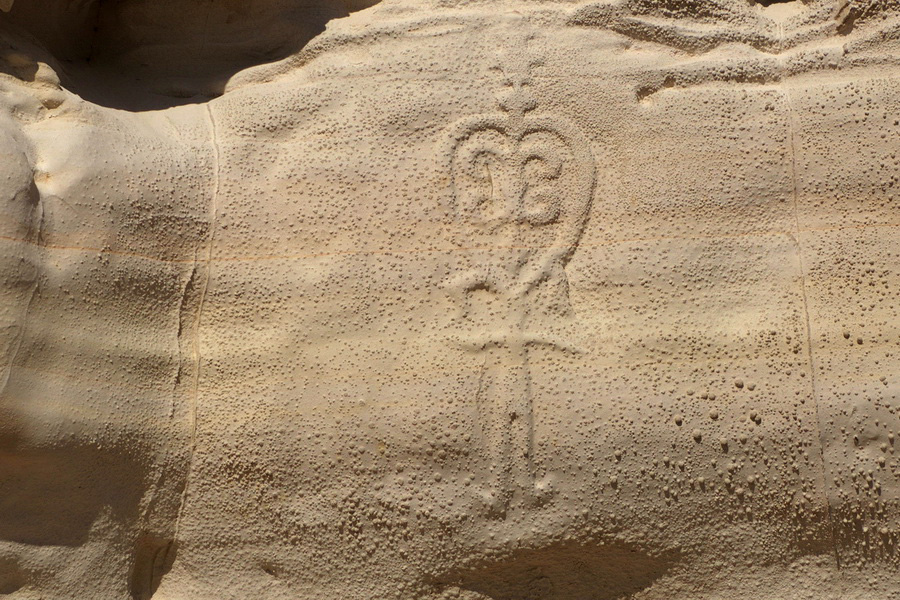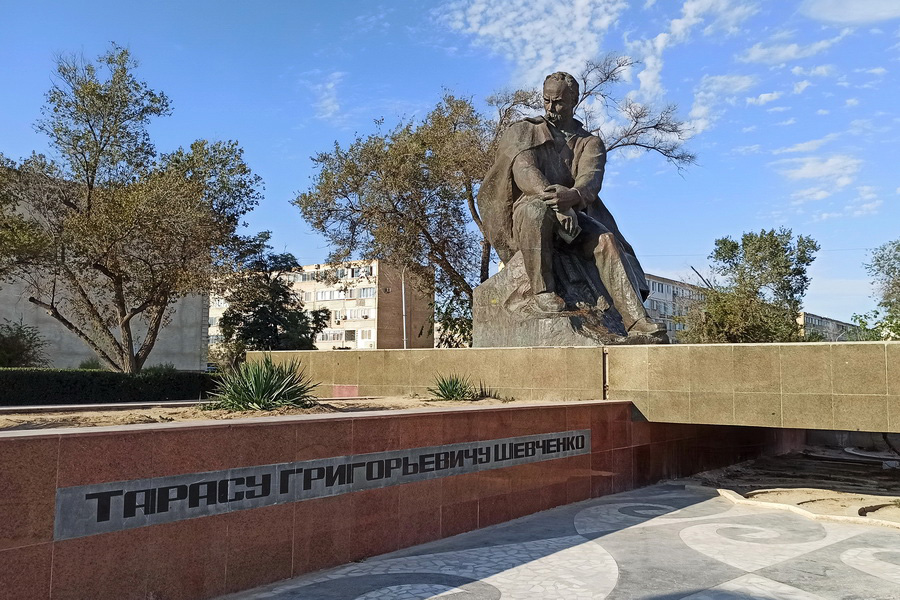 Rock art in Aktau
Rock art in Aktau
The history of Mangystau traces back millions of years, during a time when continents shifted, mountains submerged, and vast seas formed and evaporated. The region's natural wonders echo tales of the ancient Tethys Ocean, which spanned the Earth for a billion years. Today, when you look closely at the foundational layers of the enormous limestone formations of Bozzhyra and Airakty, you'll find mysterious patterns and designs that were once marine life of the Tethys Ocean. Shell remnants, some located over 200 kilometers from the Caspian Sea, and fossils like prehistoric shark teeth and ichthyosaur bones, all harken back to the Mesozoic era.
 Fossil at the Tuzbair salt marsh
Fossil at the Tuzbair salt marsh
After the ocean retreated, dinosaurs roamed, later giving way to the age of mammals. In Mangystau's Zhygylgan depression, you can find ancient footprints of predatory mammals and various birds, all pointing to the Miocene epoch.
 The footprint of an ancient predator in Zhygylgan
The footprint of an ancient predator in Zhygylgan
Ancient human traces found near the Caspian Sea coast suggest continuous habitation from the Paleolithic to Neolithic periods, indicating human presence here about 12,000 years ago. Notable sites include the area near Shakpak-ata and the Kulaly Island settlement.
Portions of the famed Silk Road passed through Mangystau, as evidenced by ruins of caravanserais, fortresses, and mosques. Yet, its harsh desert climate meant that not all ventures dared to traverse the vast stretches of the Ustyurt Plateau. The region's first historical mention is from the 9th century by Arab geographer Al-Istakhri, referring to the land as Siyah-Kuh ("Black Mountain"). Yet, after Genghis Khan's invasion, this route was abandoned, causing Mangistau to fade from historical records.
It wasn't until the 18th century, amid Russia's Central Asian conquests, that Mangystau re-emerged as a pivotal point. It became a stronghold for Russian military expeditions heading south. A series of name changes for key forts in the area culminated in Fort Shevchenko, named in honor of the renowned Ukrainian writer and poet Taras Shevchenko.
 Monument to Taras Shevchenko in Aktau
Monument to Taras Shevchenko in Aktau
From 1850 to 1857, Shevchenko was exiled to Mangystau for his progressive writings that challenged the Russian emperor's rule. Despite a strict ban on creative pursuits, Shevchenko spent those seven years painting and documenting Mangystau, sharing its mysteries with the world. Today, a tribute to the Ukrainian poet stands proudly in Aktau, Mangystau's capital.
 Kazakh family, drawing by Taras Shevchenko
Kazakh family, drawing by Taras Shevchenko
The 20th century ushered in a new chapter for Mangystau when vast uranium, oil, and gas reserves were unearthed. Rapid industrialization followed, with the region boasting some of Kazakhstan's highest wages. Aktau is now celebrated as Kazakhstan's oil capital.

